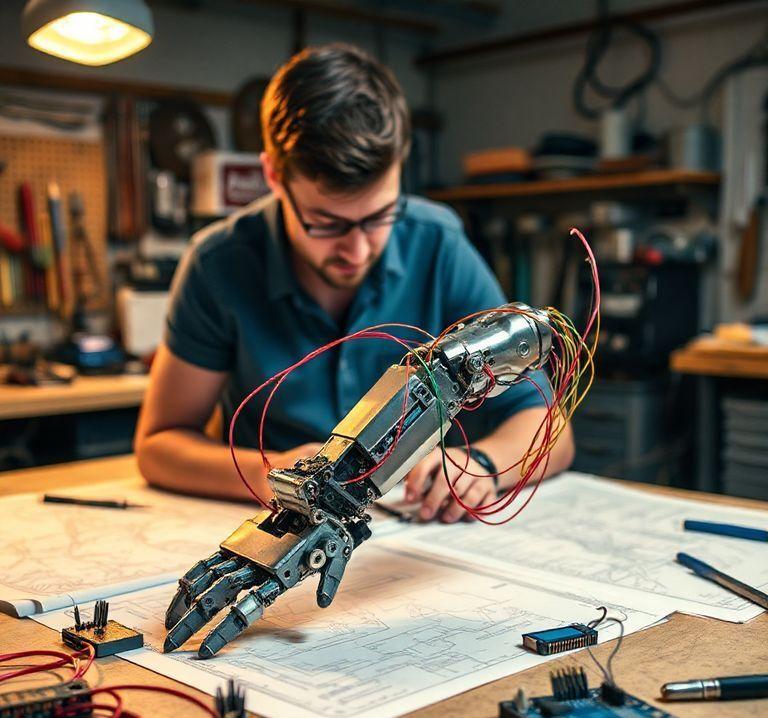Step-by-Step Guide to Building a Robotic Arm with Arduino
10.12.2024 - Engine: Gemini

Step-by-Step Guide to Building a Robot Arm with Arduino
Required Hardware:
- Arduino board (e.g., Uno, Mega)
- Servo motors (minimum 4)
- Servo drivers (e.g., SG90 or MG995)
- Joint linkages (e.g., aluminum or plastic)
- Screws and nuts
- Wires and connectors
- Power supply (e.g., 9V battery or power adapter)
Programming:
- Arduino IDE
- Servo library (e.g., Servo.h)
Step-by-Step Instructions:
1. Joint Linkage Assembly:
- Determine joint positions and assemble the joint linkages accordingly.
- Ensure sufficient stability and range of motion.
2. Servo Motor Attachment:
- Secure the servo motors to the joints using screws and nuts.
- Verify that the motors are properly aligned and can move the joint in the desired direction.
3. Wiring:
- Connect the servo motors to the servo drivers.
- Interface the servo drivers with the Arduino board.
- Power the Arduino board and servo motors.
4. Programming:
- Import the servo library into the Arduino sketch.
- Initialize the servo motors and set their initial positions.
- Write code that controls the servo motors to move the robot arm.
5. Testing and Tuning:
- Upload the sketch onto the Arduino board.
- Test the robot arm movement and make adjustments to the code or mechanics as needed.
Potential Applications:
- Automated assembly processes
- Object manipulation in hazardous environments
- Research and development in robotics
- Education and STEM projects
- Arts and crafts projects

